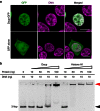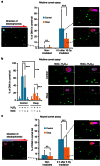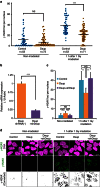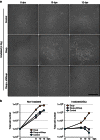Extremotolerant tardigrade genome and improved radiotolerance of human cultured cells by tardigrade-unique protein
- PMID: 27649274
- PMCID: PMC5034306
- DOI: 10.1038/ncomms12808
Extremotolerant tardigrade genome and improved radiotolerance of human cultured cells by tardigrade-unique protein
Abstract
Tardigrades, also known as water bears, are small aquatic animals. Some tardigrade species tolerate almost complete dehydration and exhibit extraordinary tolerance to various physical extremes in the dehydrated state. Here we determine a high-quality genome sequence of Ramazzottius varieornatus, one of the most stress-tolerant tardigrade species. Precise gene repertoire analyses reveal the presence of a small proportion (1.2% or less) of putative foreign genes, loss of gene pathways that promote stress damage, expansion of gene families related to ameliorating damage, and evolution and high expression of novel tardigrade-unique proteins. Minor changes in the gene expression profiles during dehydration and rehydration suggest constitutive expression of tolerance-related genes. Using human cultured cells, we demonstrate that a tardigrade-unique DNA-associating protein suppresses X-ray-induced DNA damage by ∼40% and improves radiotolerance. These findings indicate the relevance of tardigrade-unique proteins to tolerability and tardigrades could be a bountiful source of new protection genes and mechanisms.
Conflict of interest statement
T. Kunieda and T.H. declare competing financial interests, as a part of the work described in this publication has been applied for a patent (Japanese patent application number 2015-032209). All other authors declare no competing financial interests.
Figures






References
-
- Møbjerg N. et al.. Survival in extreme environments—on the current knowledge of adaptations in tardigrades. Acta Physiol. 202, 409–420 (2011). - PubMed
-
- Becquerel P. La suspension de la vie au-dessous de 1/20K absolu par démagnétisation adiabatique de l’alun de fer dans le vide le plus élevé. Compt. Rend. Acad. Sci. 231, 261–263 (1950).
-
- Hengherr S., Worland M. R., Reuner A., Brümmer F. & Schill R. O. High-temperature tolerance in anhydrobiotic tardigrades is limited by glass transition. Physiol. Biochem. Zool. 82, 749–755 (2009). - PubMed
-
- Horikawa D. D. et al.. Establishment of a rearing system of the extremotolerant tardigrade Ramazzottius varieornatus: a new model animal for astrobiology. Astrobiology 8, 549–556 (2008). - PubMed
-
- Ono F. et al.. Effect of high hydrostatic pressure on to life of the tiny animal tardigrade. J. Phys. Chem. Solids 69, 2297–2300 (2008).
Publication types
MeSH terms
LinkOut - more resources
Full Text Sources
Other Literature Sources
Molecular Biology Databases
Research Materials

